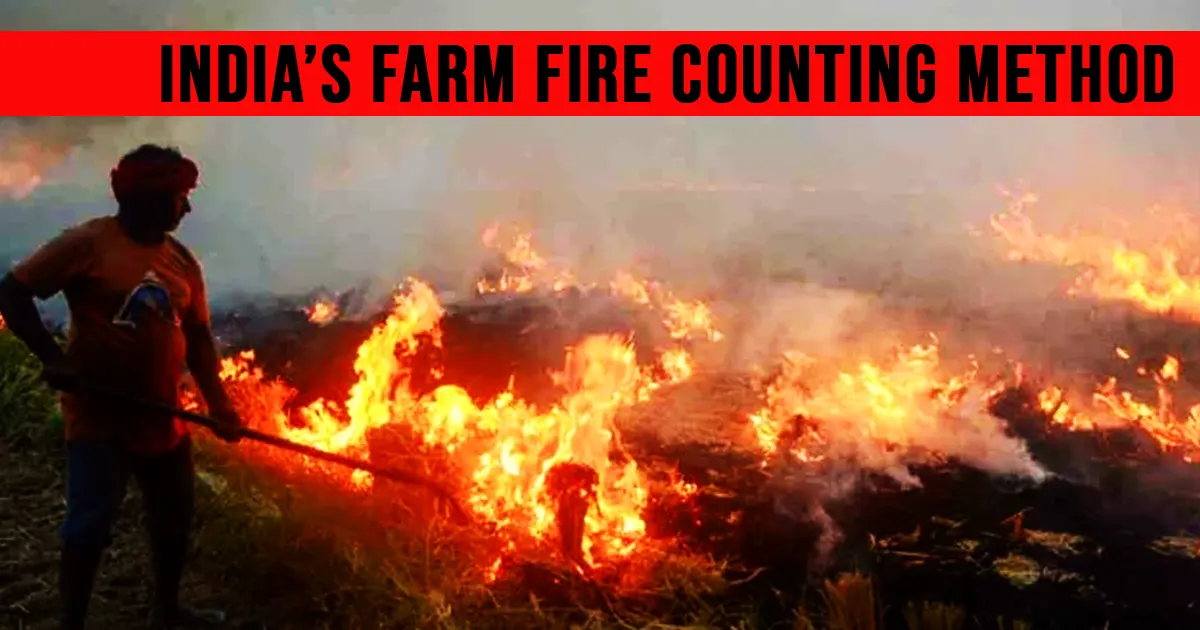
Context (TH | IE):
India plans to shift from using satellite-based live fire detection to monitoring burnt areas for counting farm fires, a major contributor to severe air pollution in northern India.
Background
- Farmers in northern India burn crop stubble after the paddy harvest to quickly clear fields for the next wheat sowing season. This practice, however, is illegal due to its adverse environmental impact.
- Despite government subsidies for alternatives like harvesting machines, these are not widely adopted due to their high costs and limited availability of rental options.
Implications of Farm Fires
- Environmental Impact:
Farm fires are a significant source of air pollution and smog, especially in northern India. The resulting smoke contributes to respiratory issues among the population, exacerbating health problems. - Economic Costs:
The health effects of pollution lead to increased healthcare costs. Additionally, farm fires reduce agricultural productivity, impacting the overall economy. - International Attention:
India’s farm fire issue attracts international scrutiny, particularly as the country works to meet its climate change commitments and adopt more sustainable agricultural practices.
How Does India Currently Monitor Farm Fires?
- Satellite Monitoring:
Currently, India uses data from two NASA satellites that pass over various states twice daily. These satellites capture farm fires within a 90-second window, providing data that helps estimate fire incidents and plan interventions.
Issues with the Current Method
- Evasion by Farmers:
Farmers often adjust their burning practices to avoid detection during the limited monitoring windows offered by satellites. - Limited Detection Window:
The satellites can only detect fires that occur within the brief window when they pass over the region. Fires that occur outside of this window or right before the satellite pass may go undetected. - Accuracy Concerns:
There are questions about the comprehensiveness and accuracy of the satellite-based monitoring system, especially when it comes to estimating the scale and impact of farm fires.
Proposed Alternative
- Burnt Area Monitoring:
Instead of focusing on live satellite detection of fires, the proposed alternative involves monitoring residual burnt areas. This approach would allow for a more accurate assessment of farm fires over time, overcoming the limitations of live satellite monitoring. - Stationary Satellites:
Another suggestion is the use of stationary satellites for real-time data collection, providing continuous monitoring of farm fires.
Challenges in Transition
- Technological Readiness:
Developing and deploying a burnt-area monitoring system requires significant technological investment and time to ensure the system’s reliability and accuracy. - Policy Coordination:
A successful transition to this new method will require close coordination between central and state governments, as farm fires are a nationwide issue with regional variations. - Farmer Resistance:
Farmers may resist the new approach due to concerns about the availability and cost of alternative practices, such as eco-friendly stubble management tools.
Way Forward
- Policy Interventions:
Expanding subsidies for affordable stubble management tools, as well as ensuring the timely availability of rental machines in high-demand agricultural areas, would help reduce the reliance on burning. - Technological Upgrades:
India should invest in stationary satellite-based systems and artificial intelligence (AI)-driven burnt-area analysis tools to improve monitoring accuracy and efficiency. - Behavioral Change Programs:
Educating farmers about the environmental impacts of stubble burning and providing them with viable, cost-effective alternatives is crucial to changing farming practices. - Incentives for Alternatives:
Financial rewards and subsidies for adopting eco-friendly waste management practices could encourage farmers to move away from harmful burning practices. - Collaborative Efforts:
Engaging local governments, NGOs, and farmer organizations in awareness campaigns would help foster a cooperative approach to reducing farm fires and mitigating their impact.
- “Discuss the implications of India’s shift from satellite-based fire detection to burnt area monitoring for counting farm fires. Highlight the challenges and suggest measures to improve the adoption of alternative stubble management practices.”




